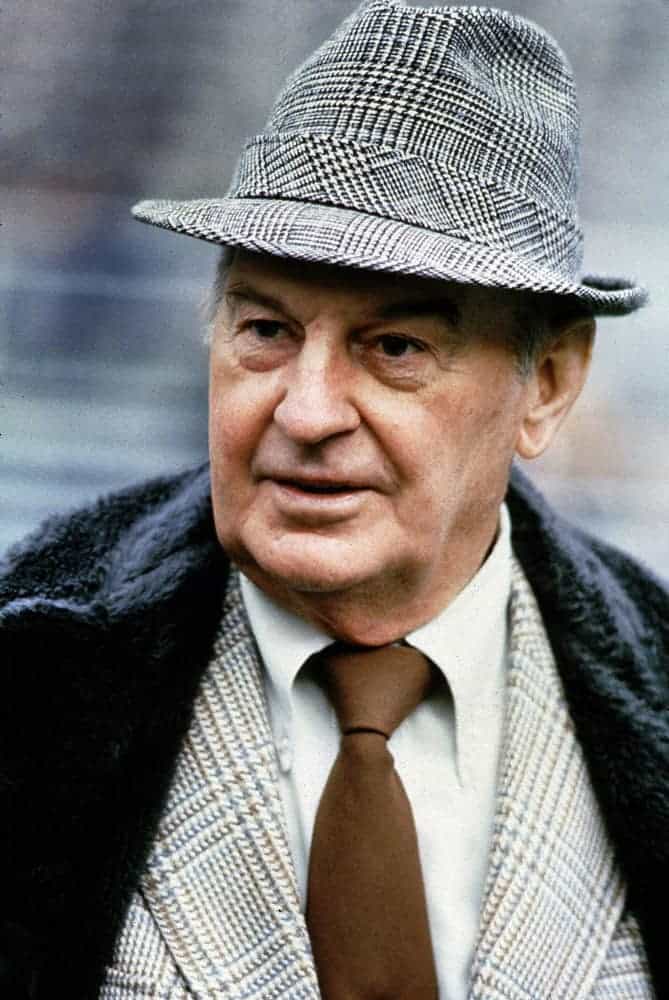Paul Brown Profile
Before he helped make the Cleveland Browns a dominating team, Paul Brown was a successful high school and college coach who transformed the game and helped make Ohio State the powerhouse squad that it remains to this day.
His impact on professional football is arguably even more significant.
His Immediate Impact on the Browns
Brown was already an established and respected coach when Cleveland created their team.
In fact, the team is named after him – a decision Paul fought.
However, he earned this honor when he drafted great players, created an innovative coaching style, and won four straight AAFC championships.
Brown was helped out by players like Otto Graham and players like Dante Lavelli, Bill Willis, and Marion Motley.
Cleveland immediately embraced their team and wasn’t disappointed when the Browns demolished the Miami Seahawks 44-0.
60,135 people showed up for the game, which was then a very high record.
The team ended the season 12-2 and won the championship, which they continued to do for the next three years.
Their dominance was so complete that some blame them for the AAFC’s failure.
Their domination was so perfect that they won every game in 1948, a feat that was not matched until 1972.
Joining the NFL
As one of the three teams to make the jump to the NFL in 1950, the Browns were considered a minor squad by most fans of the league.
However, they immediately proved their detractors wrong by beating the two-time defending champion Philadelphia Eagles 35-10 in their first NFL game.
They had 10 wins, including their first NFL championship on a field goal in the last 28 seconds of the game.
Over the next few years, the Browns went to the championships but kept losing to the Detroit Lions.
However, they finally beat the Lions in 1954 in a complete 56-10 shellacking.
QB Otto Graham finally made good on his threats to retire, which caused the Browns to go 5-7 in 1956 for Brown’s first losing season.
After this season, the Browns drafted Jim Brown, who helped the team win a further championship in 1964.
But not for Brown, as his clashes with new owner Art Modell cost him his job in 1963.
Other issues that led to this departure included Brown’s very controlling style of coaching and encounters with star Jim Brown, who was a very outspoken individual who often spoke out about his coach.
Brown continued to receive a salary from the team for the next several years.
Working With the Bengals
After being fired from the Browns, Brown was mostly quiet for several years and, by his account, mostly played golf to pass the time.
However, when a new expansion team was set up in Cincinnati in 1968 – the Bengals – Brown joined as coach.
Their first two seasons were quite poor but, when they entered the NFL in the 1970 AFL-NFL merger, they were much more competitive.
Unfortunately, an injury to quarterback Greg Cook ended his career in 1970 and forced Brown and assistant Bill Walsh to rely on backup quarterback Virgil Carter.
Carter was a very accurate thrower at short distances but did not have a long-distance arm.
Rather than force him to adapt, Brown and Walsh created an entirely new offensive scheme based around short, but accurate passes.
This style later became the West Coach offense and was implemented by Bill Walsh with the San Francisco 49ers to great success.
In spite of still having innovative skills like these, Brown was in his 60s while coaching the Bengals, and other coaches had caught up with his ideas and implemented their own.
And when the Bengals struggled to get past the first round of the playoffs, he finally stepped down in 1975 after 45 years of professional coaching.
He died in 1991 but was honored by the Bengals naming their stadium after him.
Browns’ Innovations and Statistics
During the early years of football, no coach was as uniquely innovative as Paul Brown.
Think of him as the Bill Belichick of the time – a coach who was always one step ahead of his competition.
Brown was the first coach to understand the importance of speed in football and worked hard to make his player as fast as they were tough.
Brown also emphasized intelligence in the game and demanded that his players get tested before they join the team and learn plays.
This step is now standard but was considered controversial at the time.
Just as controversial was his invention of the facemask, various types of passing plays, and an early in-helmet radio.
Brown’s innovations and successful coaching style helped him become one of the most respected coaches of all time.
During his 17 years with the Browns, he had a record of 158-48-8, a win percentage of .767.
And while his eight years in Cincinnati weren’t as successful, he still had a 55-56-1 record, good for .495 overall.
Combined, this gives him a record of 213-104-9 with a win percentage of .672.
NEXT: Who Started The Cleveland Browns? (Complete History)